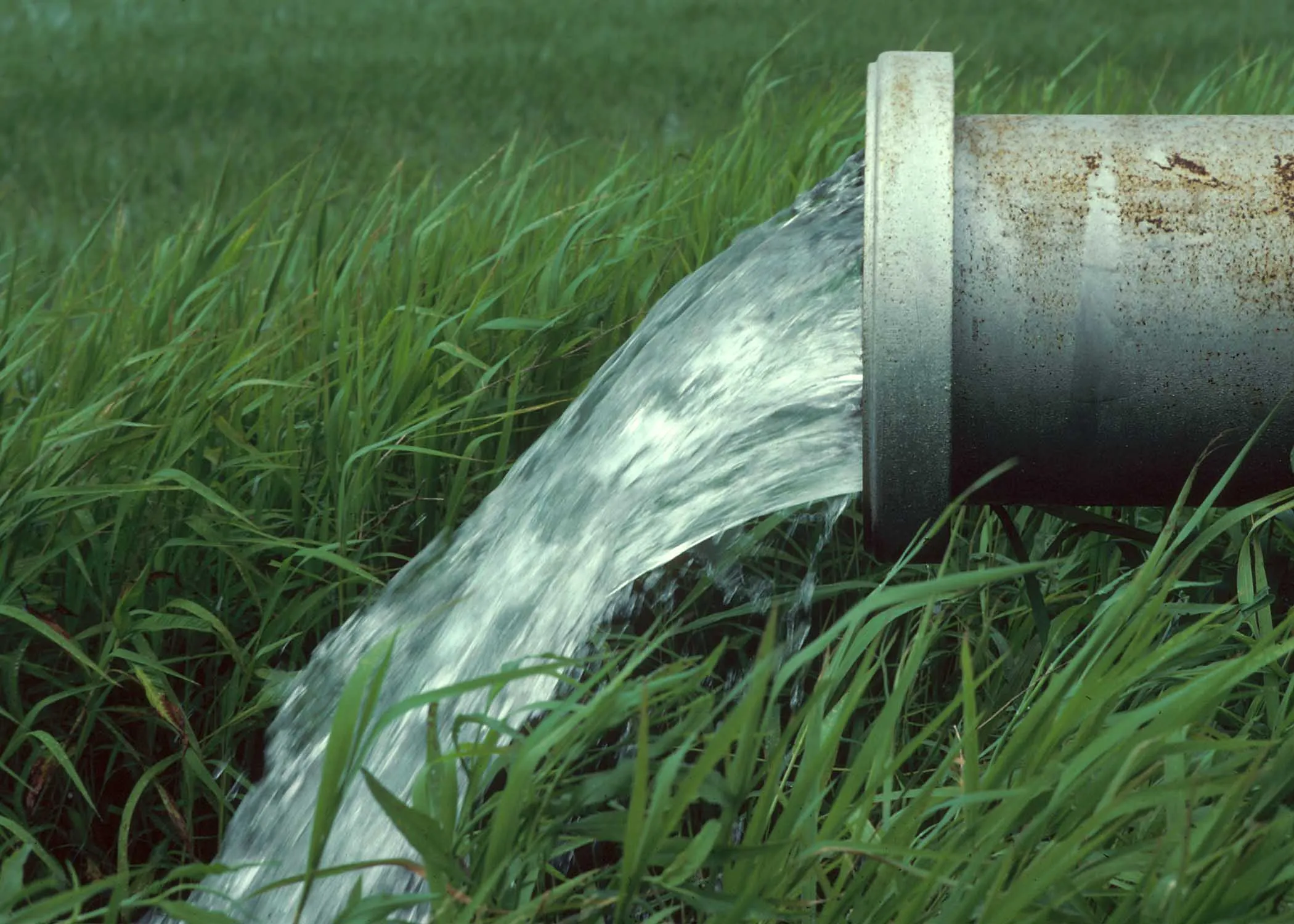Water department asks Burlington and Colchester residents to limit water use – VTDigger

Water Infrastructure Stress Event in Burlington: A Case Study in Sustainable Development Goal Challenges
1.0 Executive Summary
A recent water conservation notice in Burlington, Vermont, highlights critical challenges related to the United Nations Sustainable Development Goals (SDGs), particularly SDG 6 (Clean Water and Sanitation), SDG 9 (Industry, Innovation and Infrastructure), SDG 11 (Sustainable Cities and Communities), and SDG 13 (Climate Action). The advisory was issued following a drop in reservoir levels caused by the dual pressures of a heatwave and the failure of aging municipal water pumps. This report analyzes the event’s causes, the official response, and its direct implications for achieving sustainable and resilient community services.
2.0 Incident Analysis and Alignment with SDG 6: Clean Water and Sanitation
The incident provides a direct assessment of the region’s progress and vulnerabilities concerning SDG 6, which aims to ensure the availability and sustainable management of water for all.
2.1 Event Chronology
- A water tank in Colchester, served by Burlington’s water system, experienced a water level drop of two feet below the minimum required level.
- City officials issued a water conservation notice to all customers in Burlington and Colchester Fire District 2.
- The cause was identified as a combination of increased demand due to a heatwave and the mechanical failure of two 25-year-old water pumps.
- Emergency repairs were initiated on the failed infrastructure, while public cooperation was sought to stabilize the system.
2.2 Impact on Water Security and Management (SDG 6)
- Vulnerability of Water Access: The event exposed the fragility of the water supply system, which serves approximately 12,800 customers, including critical facilities like the UVM Medical Center. This underscores the challenge of ensuring universal and equitable access to safe drinking water, a core tenet of Target 6.1.
- Water-Use Efficiency: The city’s call for conservation is a direct, reactive measure to increase water-use efficiency (Target 6.4) across residential and commercial sectors to mitigate the immediate crisis and ensure sustainable withdrawals.
- Community Engagement in Water Governance: The public advisory engaged the community in responsible water consumption, a key aspect of participatory water management.
3.0 Infrastructure and Climate Resilience: A Review of SDGs 9, 11, and 13
The event’s root causes—failing infrastructure and extreme weather—connect directly to broader goals for resilient infrastructure, sustainable cities, and climate action.
3.1 Infrastructure Deficiencies (SDG 9)
- Aging Infrastructure: The failure of pumps that are approximately 25 years old highlights a significant challenge in maintaining quality, reliable, and resilient infrastructure as stipulated in Target 9.1.
- Need for Modernization: This incident demonstrates the urgent need for strategic investment in upgrading municipal water systems to prevent service disruptions and support long-term community well-being and economic development.
3.2 Urban Resilience and Climate Adaptation (SDG 11 & SDG 13)
- Sustainable Cities and Communities: The disruption to an essential service like water supply is a direct threat to urban resilience and the goal of making cities inclusive, safe, and sustainable (SDG 11).
- Climate Change Impact: The heatwave, cited as a primary contributor to increased water demand, links the infrastructure stress to the wider impacts of climate change. This highlights the importance of strengthening resilience and adaptive capacity to climate-related hazards (Target 13.1).
- Integrated Resource Planning: The city’s response reflects an ad-hoc implementation of policies for resource efficiency and resilience, pointing to the need for more proactive and integrated planning as called for in Target 11.b.
4.0 Recommendations and Forward Outlook
4.1 Conservation Measures Implemented
The advisory requested specific public actions to reduce system strain, directly contributing to SDG 6.4 (water-use efficiency):
- Delaying non-essential outdoor watering.
- Reducing water consumption during showers, dishwashing, and teeth brushing.
- Operating laundry and dishwashing machines only with full loads.
- Avoiding water usage during peak times by shifting activities to after 8 p.m. and before 6 a.m.
4.2 Strategic Implications for Sustainable Development
To better align with the SDGs and prevent future occurrences, the following strategic actions are indicated:
- Prioritize Infrastructure Modernization: A comprehensive plan for upgrading aging water infrastructure is necessary to ensure reliability and resilience, directly addressing the objectives of SDG 9.
- Develop Proactive Conservation Programs: Move beyond reactive advisories to establish long-term water conservation strategies that build community-wide efficiency, fulfilling the aims of SDG 6.
- Integrate Climate Adaptation into Urban Planning: Municipal and resource management plans must incorporate climate change projections, such as the increased frequency of heatwaves, to build robust adaptive capacity in line with SDG 11 and SDG 13.
Identified Sustainable Development Goals (SDGs)
-
SDG 6: Clean Water and Sanitation
This goal is central to the article, which discusses the management of drinking water, the challenges of ensuring a stable supply, and the need for public conservation. The entire narrative revolves around the city’s efforts to manage its water resources after an infrastructure failure.
- The article states that Burlington issued a “water conservation notice” asking residents to “limit non-essential water usage,” which directly relates to the sustainable management of water.
- The problem originates from a drop in water levels in a reservoir that serves thousands of customers, highlighting the importance of ensuring water availability.
-
SDG 9: Industry, Innovation and Infrastructure
The article explicitly points to failing infrastructure as a primary cause of the water shortage. This connects directly to the need for reliable, sustainable, and resilient infrastructure to support communities.
- The text mentions that “Burlington’s water infrastructure is aging and the two pumps that failed are about 25 years old.”
- The emergency was triggered because the “aging pumps that supply a water tower in Colchester stopped functioning,” demonstrating a lack of resilient infrastructure.
-
SDG 11: Sustainable Cities and Communities
The issue is framed within an urban context (Burlington and Colchester) and directly impacts the safety and well-being of its residents and the functionality of critical urban services.
- The article highlights the vulnerability of the city’s essential services, noting that the reservoir serves the “University of Vermont and UVM Medical Center’s Level 1 trauma center.”
- The public works director emphasizes the need to “make sure we’re able to serve any fire or emergency,” linking water infrastructure directly to urban disaster preparedness and community safety.
Specific SDG Targets
-
Target 6.1: Achieve universal and equitable access to safe and affordable drinking water for all.
The article discusses a direct threat to the continuous and safe supply of drinking water for the community. The city’s actions are aimed at restoring and maintaining this access for its ~12,800 customers.
- The conservation notice was issued because the water supply to “about 10,000 customers in Burlington and about 2,800 in Malletts Bay” was compromised.
- The emergency response is focused on ensuring water is available for critical health services, such as the “UVM Medical Center’s Level 1 trauma center,” which aligns with ensuring universal access.
-
Target 6.4: Substantially increase water-use efficiency across all sectors and ensure sustainable withdrawals and supply of freshwater to address water scarcity.
The city’s call for conservation is a direct attempt to increase water-use efficiency at the consumer level to manage a period of water stress.
- The alert asks residents to help by “reducing the time of showers, dish washing and teeth brushing” and delaying “laundry and dishwashing until a full load can be run.”
- The public works director states that the system’s recovery is “dependent on people not using as much water,” directly linking conservation to supply stability.
-
Target 9.1: Develop quality, reliable, sustainable and resilient infrastructure… to support economic development and human well-being.
The root cause of the crisis is identified as unreliable and aging infrastructure, highlighting the need for investment and upgrades to prevent future failures.
- The article states, “Burlington’s water infrastructure is aging and the two pumps that failed are about 25 years old,” pointing to a lack of quality and reliable infrastructure.
- The event is described as the “first time the city has issued a water conservation notice during peak summer” in 12 years, suggesting a decline in infrastructure resilience.
-
Target 11.5: Significantly reduce the number of deaths and the number of people affected… by disasters, including water-related disasters…
The failure of the water system is treated as a critical incident or a potential water-related disaster that affects the city’s population and its ability to respond to other emergencies.
- The article notes the importance of maintaining water levels to “serve any fire or emergency,” which is a key component of disaster risk reduction in a city.
- The strain on the water supply during a “heat wave” illustrates the link between climate-related events and infrastructure vulnerability, a key concern of this target.
Implied Indicators for Measuring Progress
-
Indicator for Target 6.4: Level of water stress.
The article provides a specific, measurable indicator of water stress that triggered the city’s response.
- It is explicitly mentioned that “the water in a Colchester tank fell 2 feet below the minimum desired water level,” which serves as a direct, local indicator of water stress.
- The statement that the “water system is stressed” during a heatwave also implies a condition of water stress.
-
Indicator for Target 9.1: Frequency and impact of infrastructure failures.
The article implies indicators that can be used to track the reliability and condition of the water infrastructure.
- The age of the failed equipment (“pumps that failed are about 25 years old”) is an indicator of infrastructure condition.
- The frequency of service alerts (“first time the city has issued a water conservation notice during peak summer” in 12 years) serves as an indicator of infrastructure reliability over time.
-
Indicator for Target 11.5: Disruption of basic services.
The issuance of the conservation notice itself is an indicator of a disruption to a basic service (water supply) affecting a significant portion of the city’s population.
- The “water conservation notice” affecting ~12,800 customers is a quantifiable event that measures the impact of the infrastructure failure on the community.
Summary of SDGs, Targets, and Indicators
| SDGs | Targets | Indicators Identified in the Article |
|---|---|---|
| SDG 6: Clean Water and Sanitation | 6.1: Achieve universal and equitable access to safe and affordable drinking water for all.
6.4: Substantially increase water-use efficiency and ensure sustainable supply to address water scarcity. |
|
| SDG 9: Industry, Innovation and Infrastructure | 9.1: Develop quality, reliable, sustainable and resilient infrastructure. |
|
| SDG 11: Sustainable Cities and Communities | 11.5: Significantly reduce the number of people affected by disasters, including water-related disasters. |
|
Source: vtdigger.org

What is Your Reaction?
 Like
0
Like
0
 Dislike
0
Dislike
0
 Love
0
Love
0
 Funny
0
Funny
0
 Angry
0
Angry
0
 Sad
0
Sad
0
 Wow
0
Wow
0










/campaigns/16-days-of-activism-against-gender-based-violence/pr-web-banner.tmb-1200v.jpg?sfvrsn=8cc7b98e_1#)



































































